I recently picked up a used Nexstar 6/8 SE mount and tripod. The idea is using it not only as a grab-and-go for my 72mm f/6 Orion EON, (and hopefully a 5 or 6″ SCT OTA down the line), but also in the hopes of using it for some lightweight wide-field long-exposure and time-lapse astrophotography.
I wanted to side-by-side mount a DSLR camera and wide-angle lens combo alongside my unused Celestron 9×50 finder scope from my CPC800 and use an Orion StarShoot autoguider attached to the finder to guide the whole contraption for long exposure photos. That this setup can run on batteries, and is lightweight enough to chuck in the back of the car for camping trips, made this an interesting camera platform despite the Nexstar’s well known astrophotography limitations.
Celestron 9×50 Finder Scope Autoguider
I found a few pages and forum posts (http://bit.ly/N5GJ7D, http://bit.ly/QoZl9f and http://bit.ly/MUgGDD) with instructions on making an adapter for Orion’s autoguider using PVC pipe fittings but unfortunately all of them required drilling a hole in the finder which I didn’t want to do. I wanted a solution which would require no modifications to the finder and would be easy to undo.
Luckily, while fooling around with the finder scope one afternoon I realized that the threads on the back of Celestron’s 9×50 Model # 51611 finder scope that the cross-hair eyepiece attaches to are common 2″ SCT threads! Given that the 1.25″ adapter on the StarShoot autoguider attaches to a standard T-thread on the autoguider body all I needed to find was a male SCT to male T-thread adapter to fit everything together.
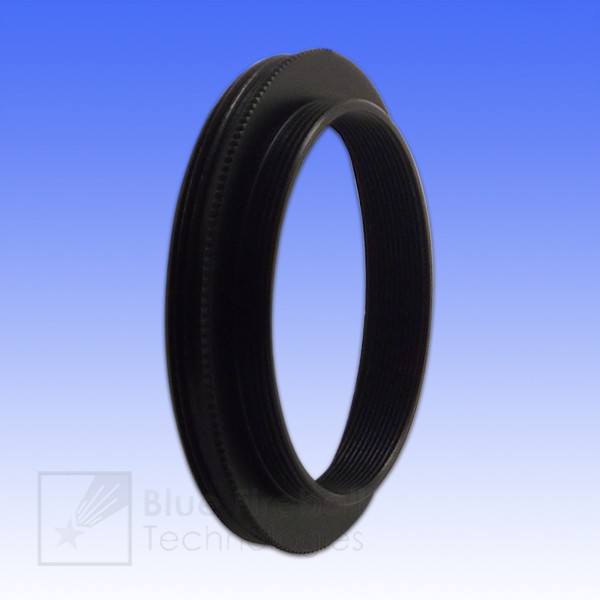
I had no clue if such a beast existed, but after a bit of googling I found what I needed at http://agenaastro.com. Their Blue Fireball T / T2 Male Thread to SCT Male & M48 was exactly what was needed to make this work. (Seen in the first photo below.) This adapter is very low profile and easily allows the finder scope to achieve infinity focus with the Star Shoot autoguider.
As shown in the photos, the whole thing comes together in a nice, compact and sturdy assembly, and it fits perfectly on the standard Celestron finder scope mount with no modifications required.
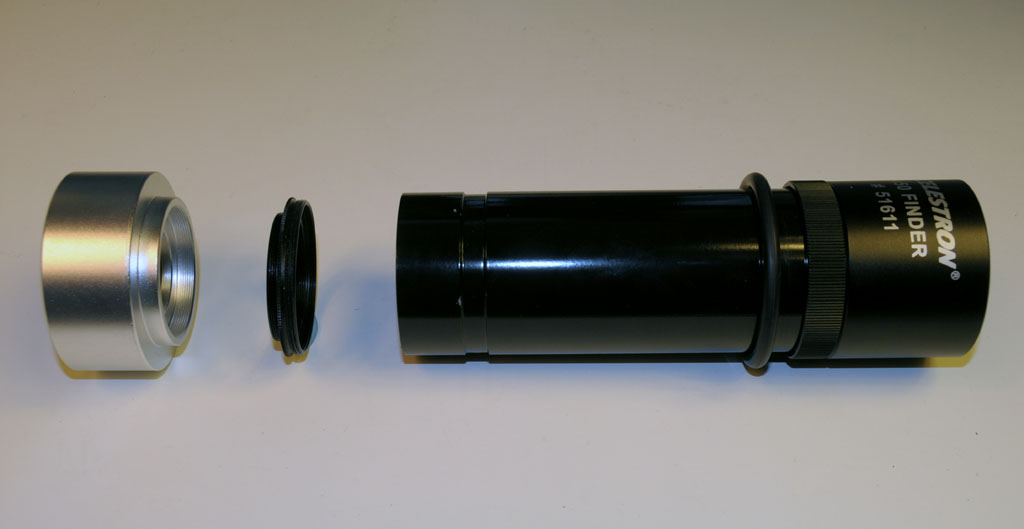
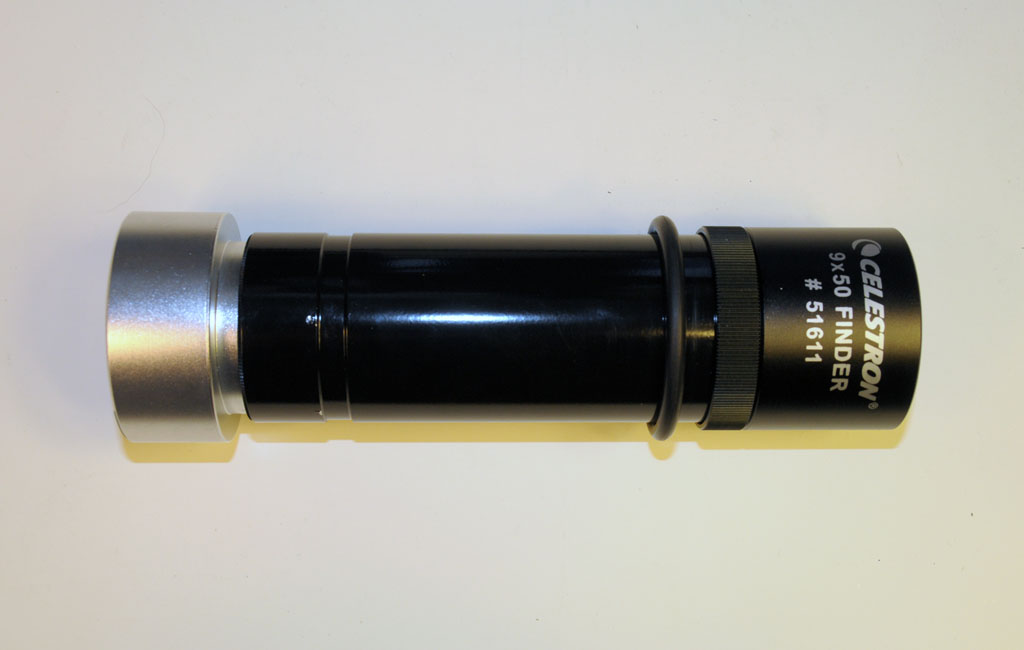
Side-by-Side Camera/Autoguider Mount
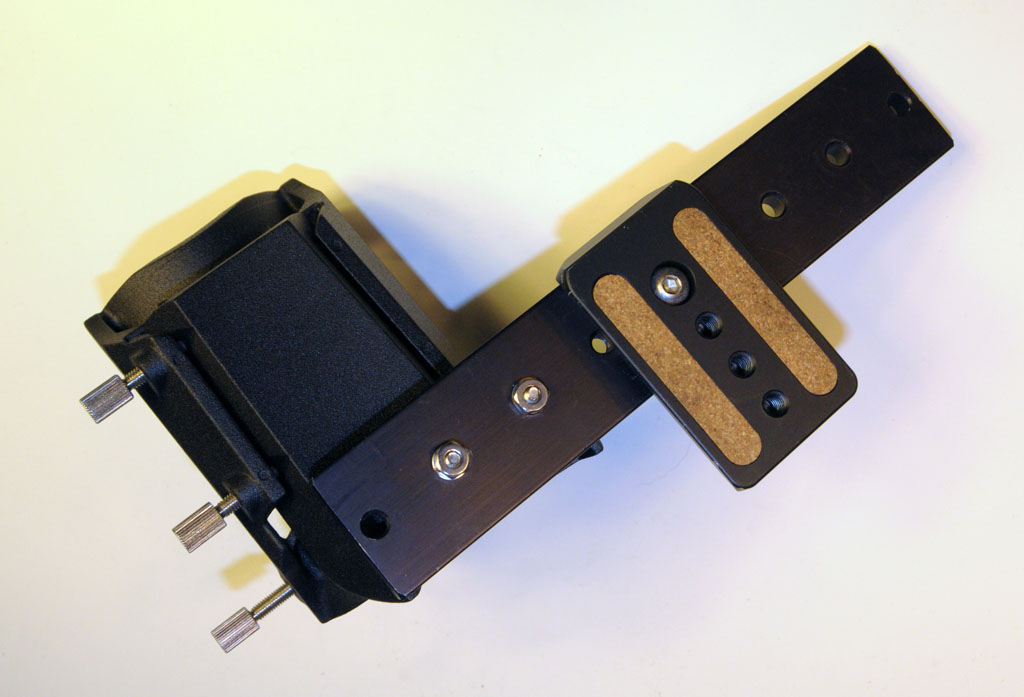
Next up was finding a sturdy way to mount the finder scope and camera on the Nexstar.
From a previous project I had a mounting bar with a center hole tapped for a standard 1/4-20 tripod stud with 4 untapped holes on each side. A couple of bolts and washers from the local hardware store worked to mount the Celestron 9×50 finder mount securely to the bar.
To attach the whole thing to the Nexstar, I used the mounting block from the Orion EON 72mm f/6. (Which normally rides piggyback on my CPC800.)
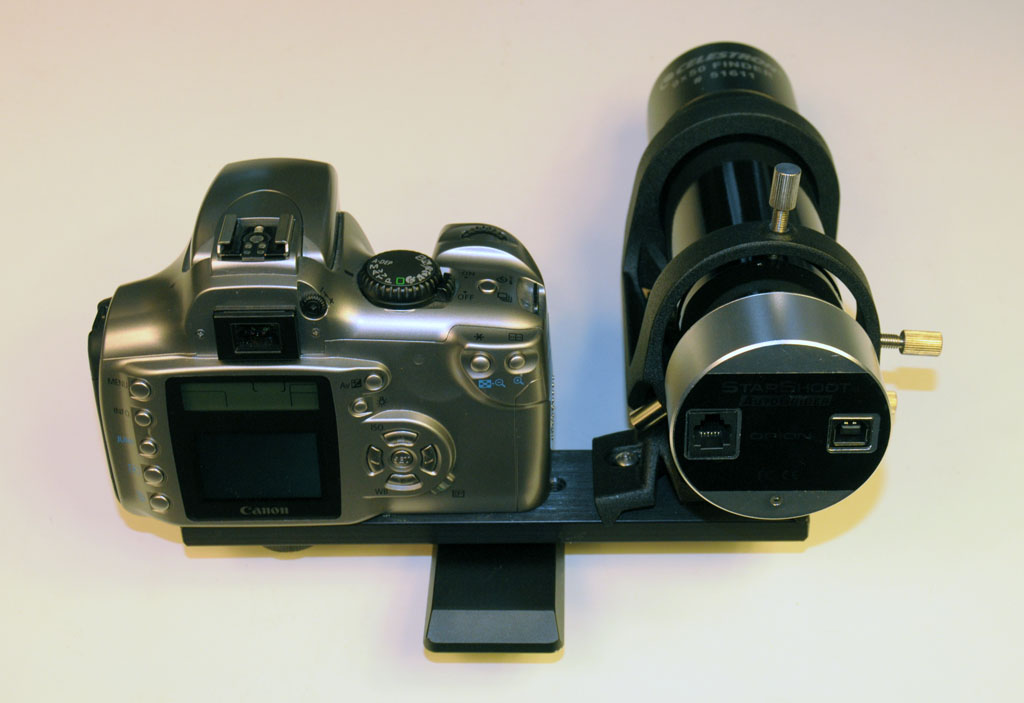
The second photo shows the system all set up with the finder scope, StarShoot autoguider and an IR modified Canon 300D. One of the lenses I plan to use with this setup is a Zenitar 16mm fisheye but unfortunately, the finder scope is mounted so far forward that it projects into the Zenitar’s 180 degree field of view. So I’ll either need to crop the resulting images or figure out some way of mounting the camera further forward or the finder scope further back.
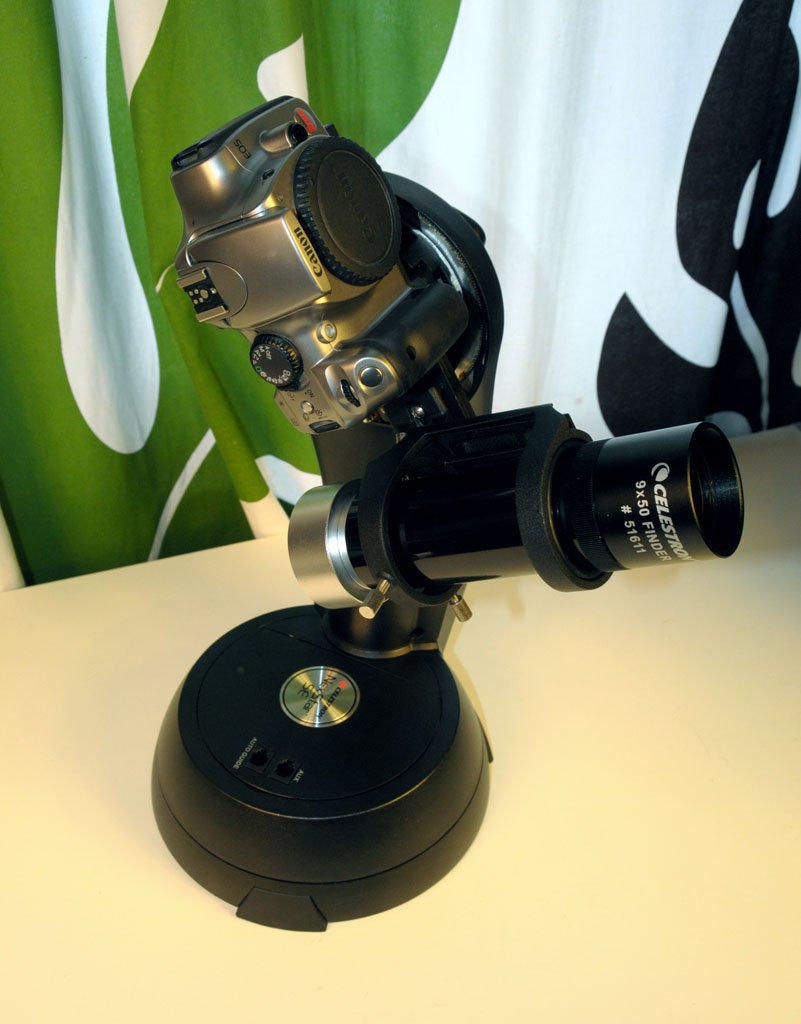
The last image shows everything attached to the Nexstar SE mount and ready to go. Note that I did have to remove the plastic altitude gear covering for the side-by-side mounting to fit which detracts a bit from the looks but everything still works fine.
I love how compact and multi-functional this setup is and can’t wait to get some time out in the field with it. Running with rechargeable batteries for the mount and with spare batteries for the camera and my netbook I think I can get a solid evening of imaging with this setup without ever needing a power plug.
The next step was to adapt a cheap, old wedge for the Nexstar


nice write up. I tried this with a sky watcher finder of similar specs but the thread size is finer on the finder scope 2 inch end.
Hi wahee! Thanks for the info. It’s odd that such a similar finder has a different thread…
I liked your site too! You have some great astro images and some great shots in your fine art prints section. 🙂
I have the answer! I while back I read about your perfect adapter discovery. In another thread on cloudy nights a member checked his Celestron finder for proper SCT threads, but he too found that the threads were finer. I check mine, and again finer threads. It was assumed you forced the threads and it worked. Not wanting to risk it I held off. Just now I checked the thread on a newer finder from a recent Edge SCT purchase, and the WERE standard SCT thread! Some time between 5 years ago, and now the asian maker of these finders changed the thread! You must use a newer finder!
Hi William! Thanks for the update and for clearing up that mystery. I definitely have one of the newer CPC’s so that’s likely the case with my finder. I’ll add a note to the article about this when I have a sec. Thanks again! 🙂
OMG I have been searching the net for hours over a couple nights trying to find the 2″ thread solution. Mine is a Zhummell 8X50 and has the fine 2″ threads looks to me like 36 TPI!, not 24 like SCT. So I have been holding off too as I don’t want to mess up my 50mm tube or drill holes into it. But my larger problem is how to you tell how far back focus will be, holding up to my eye, I can’t see how this works – have to hold it at arms length to see focus – what am I missing?
thanks
Marty
Hi Marty! I recently got a used Orion 50mm guider which looks *exactly* like the Celestron but has the finer threads. I can still screw in the adapter but only to a point. It will still hold the autoguider and as long as you don’t force the adapter it won’t damage the threads on the finderscope. As for checking backfocus, use a sheet of paper on a bright day. The image will be projected on the paper and you can measure how much back focus you have that way. Let me know if you need any help or want me to check anything with my gear.
I,too, recently bought a Celestron autoguider and intended to us my Celestron 9×50 as the initial guidescope, so thought your post about the SCT adapter would solve my problem.
However, I found that the prime focus of the 9×50 is just inside the end of the OTA and haven’t been able to work out how to get (a) a 24m eyepiece and (b) the autoguider to focus that far in. How did you manage to do that?
Cheers
xys
I have a Meade LX-50 with a fried circuit board.
Looking for a replacement or repair.
Any ideas as to who/where will handle this?
Or a retrofit with another similar models parts?
Any direction is appreciated, I need to return to the stars!
Gordon
Hi,
Probably a bit late in the day. I want to do something similar but with an EyePiece adapter on the same finderscope. Did you know of anything (or combination of adapters) that would fit the standard 1,25 eyepieces
THanks
Hi Brian. I do recall seeing 1.25″ eyepiece adapters back in the day… I found this thread that may have some leads:
https://www.cloudynights.com/topic/538314-convert-celestron-9×50-finder-to-guide-scope/